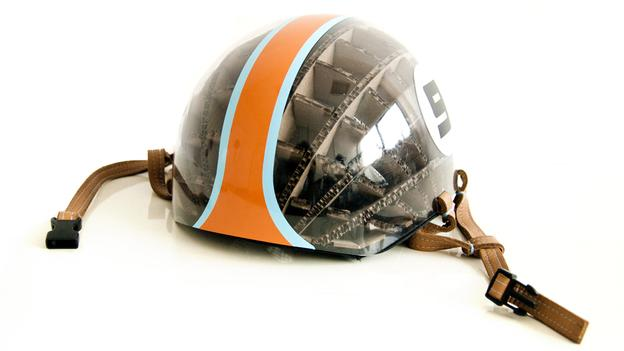Source: bbc.com
Published: January 16, 2013

Many cyclists wouldn’t leave home without a helmet – but it’s a piece of kit that doesn’t offer as much protection as some cyclists might think. The way a woodpecker is able to protect itself from long bouts of head banging influences the design of radical new head protection
If ever there were a creature that seemed destined to suffer from concussions, it would be the woodpecker. It pounds its head at into tree trunks 12,000 times per day, at speeds of 6 to 7m/s. And yet, despite this frequent, high speed head banging, the birds experience no brain damage. Not a lick.
Luckily for the woodpecker, evolution has handed it a variety of anatomical adaptations that protect its head during all that hammering. And soon, we humans may also be able to keep concussions at bay using the woodpecker’s time-tested methods.
Industrial designer Anirudha Surabhi has created the new, super-strong Kranium bike helmet, which protect cyclists’ heads by mimicking features of the woodpecker’s distinctive anatomy.
Surabhi’s interest in building a better bike helmet is personal. Several years ago, he was riding his bike through Notting Hill in London when he had an accident. He was wearing a helmet but still ended up in the hospital with a concussion. “My fall wasn’t really that bad,” Surabhi says. “It was a minor fall, but still my helmet cracked.”
At the time, Surabhi was doing a master’s degree in design at the Royal College of Art, and he just happened to be looking for an idea for his final solo project. He decided to try to build a better bike helmet – and to take inspiration from nature.
Researchers have discovered that woodpeckers have a variety of anatomical adaptations that protect their brains from injury. For instance, woodpeckers have a hyoid bone that is different from that of other birds. Normally, this y-shaped bone runs along the bottom of the mouth and to the back of the skull. But in many varieties of woodpecker, this bone is extra long, wrapping all the over the top of the skull. It acts as a natural seatbelt, keeping the brain from jostling around during impact.
But what caught Surabhi’s eye was another protective feature of woodpecker anatomy. “The woodpecker is one of the only birds on the planet where the beak and the skull are not joined together,” Surabhi says. The base of the beak and the skull are separated by a bit of flexible, spongy cartilage, which acts as a shock absorber and helps cushion repeated blows
This article no longer exists at the Source link above. It can be found in the Matteroftrust.org Resource Library.
